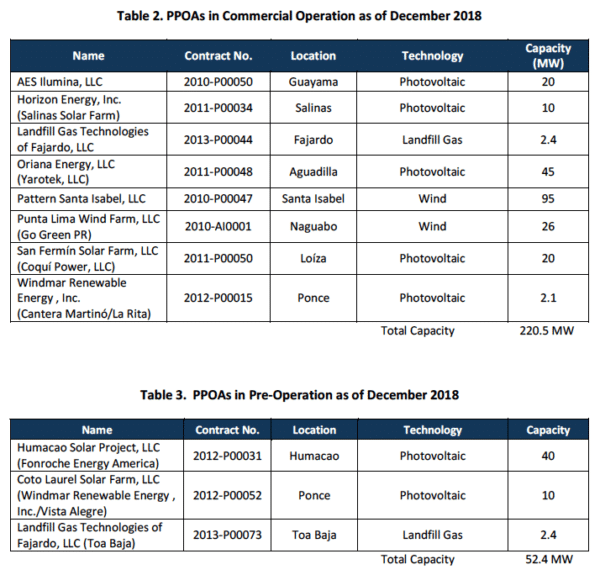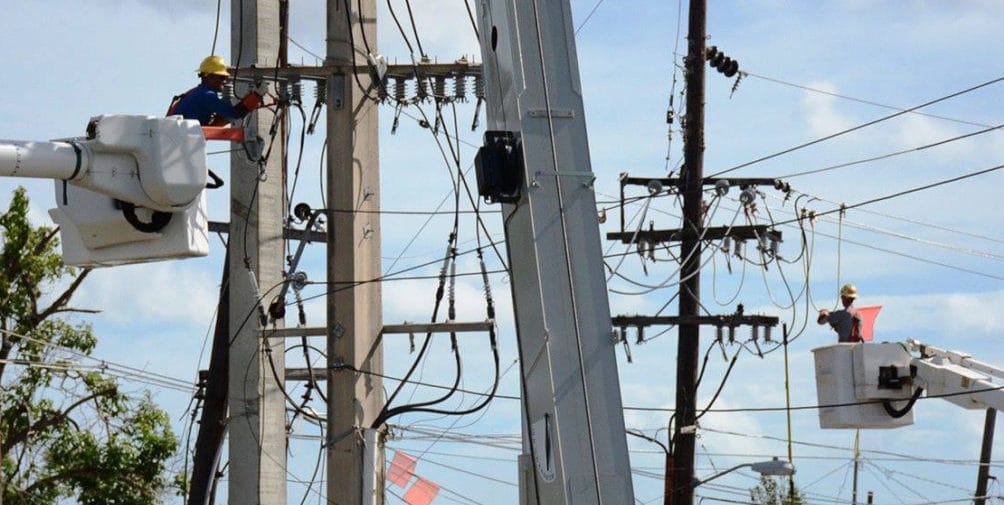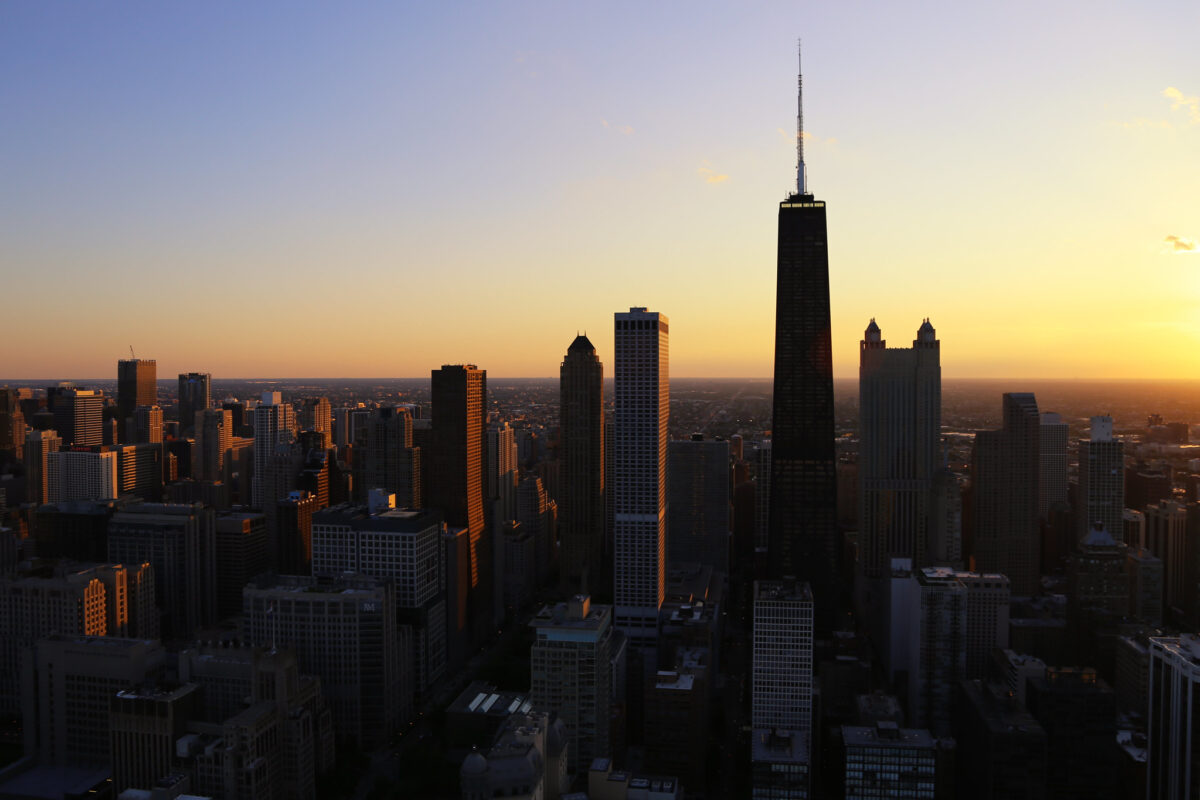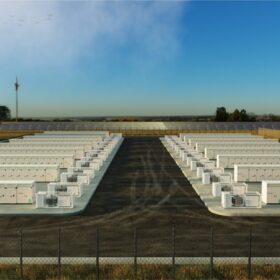Electric utilities have a big problem. They are allowed to earn a rate of return on supplying electricity to customers, often with a monopoly on supply of power, but as part of this social grant they are supposed to deliver this power reliably. And as natural disasters such as storms and wildfires increase in severity and frequency due to climate change, this gets harder and harder to do using centralized generation, as power lines are where most disruptions happen.
Of course, there are tools that would allow utilities to deliver stable electricity, namely microgrids based on distributed generation and energy storage. However, customer-sited generation eats into utility revenues and particularly obviates the need for new investments in transmission, where power companies often earn their greatest returns.
Sooner or later utilities are going to need to adapt if they want to continue to be granted the social license to deliver power. And it should not be a surprise that the first utility to seek a balance in this regard is the one that has suffered the most from natural disasters: the Puerto Rico Electric Power Authority (PREPA).
Rapid decarbonization
PREPA’s draft 2019 Integrated Resources Plan (IRP), released in late January, calls for the utility to “maximize the rate of installation of solar photovoltaic (PV) generation for the first 4 years (2019 to 2022) of the plan”. This means adding from 750-1200 MW of solar PV, in 250 MW blocks through public solicitations.
 PREPA currently has PPAs with only 97 MW of operating solar power plants, as well as 50 MW more that are identified as being in “pre-operation”. As such, this plan would increase PREPA’s large-scale solar generation by around 10x, and it is possible that some of the 330 MW of solar projects which are re-negotiating contracts with the utility could be included.
PREPA currently has PPAs with only 97 MW of operating solar power plants, as well as 50 MW more that are identified as being in “pre-operation”. As such, this plan would increase PREPA’s large-scale solar generation by around 10x, and it is possible that some of the 330 MW of solar projects which are re-negotiating contracts with the utility could be included.
Additionally, it calls for installing 500 to 1,100 MW of battery storage in the first four years of the plan – in 150 to 200 MW blocks. As only 1,030 MW of batteries are currently online in the United States, to say that this is ambitious may perhaps be an understatement. The IRP notes that “The amounts of battery energy storage are heavily correlated with the total amounts of PV to be installed and the local energy supply required for the minigrids into which the system is expected to segregate during major events.”
Along with this, under the IRP PREPA calls for “most of the existing generating fleet” to be retired by 2025 – including all of its coal and bunker fuel-fired plants – with the exception of two combined cycle gas plants, two gas turbines, and other units which would be converted from burning petroleum to gas.
The result would be a rapid decarbonization of Puerto Rico’s electricity generation, and a shift to grid based largely on solar, batteries and natural gas.
Microgrids, minigrids and hurricanes
But the decarbonization envisioned under PREPA’s plan is not actually the most radical part of the vision put forth in the IRP. Instead, it is the plan to carve up the island’s one centralized electric grid into eight “minigrids”. As the IRP explains:
The recommended minigrids are designed to operate in grid-isolated mode following a major storm, ensuring continued supply to critical loads (those necessary to manage the recovery), and provide timely resupply to the priority loads (those required to regain normalcy and restart the economy) and balance the loads within the minigrid.
These minigrids would “require” the solar and energy storage projects, along with along with “transmission and distribution hardening projects”. Complementing these minigrids is a series of smaller microgrids which have been identified for areas that “due to geography and system topology are likely to remain isolated.”
The reason for these changes is obvious. The IRP notes that Hurricanes Irma and María “forced” PREPA to reconsider how it should operate, in preparation for future events. Adriana Gonzales, the Environmental Justice Organizer for Sierra Club de Puerto Rico, is more explicit about the needs facing the island.
“During Hurricane Maria hundreds of people died simply because they couldn’t keep their insulin refrigerated, or their oxygen machines running,” notes Gonzales in a Sierra Club statement on the IRP. “We need the solar and storage in this plan so we can protect health and safety through the next hurricane with distributed, reliable energy infrastructure.”
A missing role for behind-the-meter solar and storage
Late in the IRP, PREPA also notes that it currently has 173 MW of distributed solar generation on its grid under net metering arrangements, most of which is connected to the distribution grid, not the transmission grid. The utility also expects customer-sited solar to double to around 300 MW by 2024, noting the “perception of customers of the need to gain control on their supply”.
Yet even in the IRP, PREPA appears to view this distributed solar as a burden, complaining that “DG has some hidden but real costs to PREPA”. The IRP also states that “without the proper foundation of utility-integrated energy storage and software controls, renewable energy resources could face technical and operational challenges and curtailment of highly valued carbon-free electricity could be required in order for the utility to maintain system stability and reliability”, but nowhere does it contemplate installing a distributed energy resource management system (DERMS) that would allow it to make use of these resources.
Nor does it note that unlike the large-scale solar that it is planning, these behind-the-meter solar and battery systems are located even closer to demand, and thus are inherently less subject to being interrupted when power lines go down.
As such, while PREPA’s 2019 IRP is in many ways revolutionary, it stops short of contemplating the grid of the future. Instead, it shows that even public utilities will often resist and fail to make use of customer-sited generation, in a desperate bid to maintain a control which they are rapidly losing. PREPA itself seems to recognize this, noting that “growing levels of distributed energy resources (DER) behind the meter… are challenging the historical centralized paradigm for how a utility should design, build and manage an electricity system.”
PREPA’s final IRP is scheduled to be published on February 12.
This content is protected by copyright and may not be reused. If you want to cooperate with us and would like to reuse some of our content, please contact: editors@pv-magazine.com.









Gut feel is it’s 2×4 over the untility heads time about letting the old model go and embracing local generation, storage, self consumption, and micro grids.
Two options, legislate it (that’s the 2×4) or market.
For a maker solution They need an $$$ incentive to want distributed generation and storage. They need to shift from making money on big grid to small grid, start selling home battery’s by the 1000s, let the utility make money on the behind the meter storage. They should make money transmitting power reliably. Then each customer with a battery reduces their down time risk. This turns them into a service provider not a seller of bulk goods. Make energy non a comody but a conveinwance item. Make it like cellphones, desirable high tech, green, fun. Right now it’s “another dumb bill every month”. Make it a fun game to play, how little can I use from the grid today….
This entire net metering issue and sustainable disruptive technology thing remains a monopoly control of wealth. Witness the actual investment shift from coal to more advanced technologies with fewer social risks. (fracking and water use to be addressed in the future)
The elephant in the room is the political interest of the minority vs the common good.
Bought politicians are the regressives that need to go.
It should be noted, that at least some of the medical liabilities related to power outages is overblown. When alternative energy folks exaggerate their claims, that causes doubt for the entire industry. Sadly, this is not uncommon, and is a major reason for the bashing they receive from those with a different viewpoint, and how they win their arguments.
Specific to the article, it mentions people dying because they could not refrigerate their insulin.
Regular insulin [R-Type] can be boiled for 10 minutes, and will still retain most of its effectiveness. There are some types (typically MUCH more expensive) that are a lot more delicate, but the cheap “R” type insulin is much more robust and the loss of electricity will not cause the user to die if they use this type. Sometimes a user is not well educated, and may die because they have incorrect beliefs. But, the lack of electricity is not the real cause.